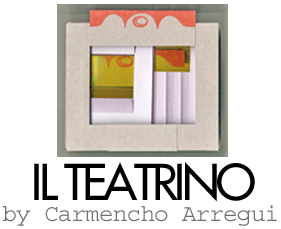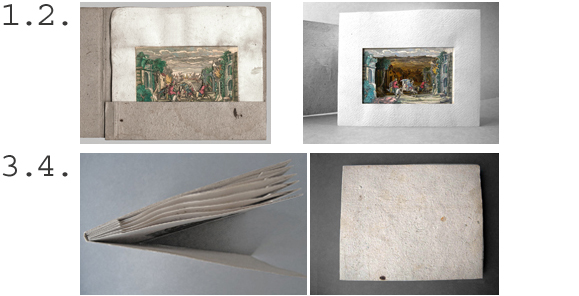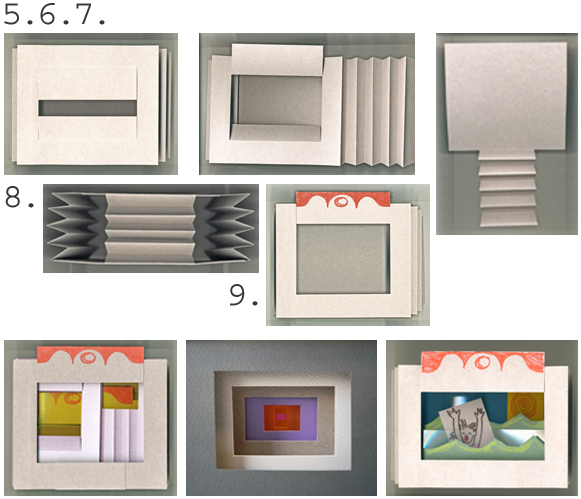
A theatrical structure
My personal research started with an old teatrino (‘little theatre’ in Italian). This was the name we gave to a collection of six scenes kept in an old folder that must have belonged to some Italian great grandfather. The scenes represented a fierce horsemen battle and had cut-outs that created a perspective view (click image 1).


At the beginning of this year I started to think of a binding for Tomorrow’s Past 2009 at the Olympia book fair in London, but none of the old books I had needed to be rebound. Instead, I thought it could be interesting to make some kind of structure to support my teatrino scenes. The more obvious construction seemed to be some kind of paper concertina that allowed for a perspective view; but from a conservation point of view I hated the idea of glueing the sides of the scenes to a strip of folded paper to fix them to the concertina because I considered it an “untouchable” document (see The Untouchables in this website). So I started to try all sorts of complicated constructions that were deceiving and useless.
I did not know then that, in modern times, these theatrical structures are called ‘Tunnel Books’. Apparently this name comes from the fact that some of them were made to commemorate the inauguration of the tunnel under the River Thames in London in 1851, but the simple fact that one looks onto a succession of cut-outs through a hole would justify the name. By the late 1700s German printers were producing panels of hand-coloured etchings designed to fit into slots in an optical box. ‘Peep books’, another name for the tunnel books, became popular paper toys in the mid 1800s. In an article that appeared in ‘The Bonefolder’ (vol 1 n°2 – p.20), Rand Huebsch writes that this kind of “book” was born during the Italian Renaissance for studying perspective, which makes sense, even if I have never seen a very old one yet.
Coming back to my “battle”, at this stage I had decided to make one concertina on either side of the scenes leaving them free inside the folds, the two concertinas being fixed to a solid back panel and a frame at the front (click images 2 and 3).
I was not happy with the precariousness of my construction being afraid of losing the inner panels from underneath; and then the idea came to make a third concertina at the bottom that adds an extra support and verticality to the scenes.
The teatrino’s structure is made in natural Khadi paper; The old wrapper being big enough to accommodate the extra thickness of the concertinas, the external look of the teatrino remains unchanged (click image 4).
This portable container can have further developments (click images 5 to 9 to see how to make one).